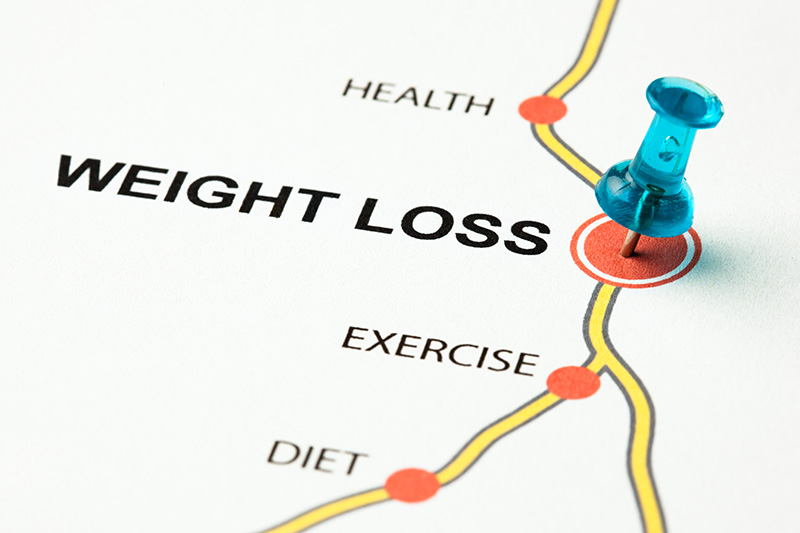Weight Loss Goals

As a goal more often associated with females than males, weight loss goals can often be confusing in the way they are measured and the bodily fluctuations that can occur while taking measurements. Weight loss goals are generally associated with a time frame to achieve them in or marked by a specific event such as, “I want to lose 10lbs before vacation.”
Reasonable Goals in Reasonable Time Frames
When setting a weight loss goal, it is important that the goal not be so extreme that it could cause health issues for an individual. One should rarely go below the target BMI range for their gender/height.
An appropriate amount of time should also be designated when establishing weight loss goals. Making a goal to lose 10lbs overnight is unrealistic. If the goal is to lose 10lbs by a certain day, plan out a gradual weight loss over 5 weeks to lose an average of 2lbs per week. This is much more reasonable and achievable. It is also less of a shock on the body to make this adjustment.
Measurement Tips
It is highly recommended that when checking one’s weight to take measurements at the same time of day as previously recorded. The human body can be tricky and depending on one’s diet and fluid intake, body weight has been known to fluctuate several pounds positive or negative from one day to the next.
Clothing and shoes should also be minded while weighing in. Different clothes have different thread counts and therefore can add inaccuracies during the weight in. Some athletic shoes can easily add 1lb each to a weigh in.
To accurately track one’s progress, it is highly recommended to keep a detailed record of the weight loss recordings. Keep track of the date, time weighed, and amount lost. It is not necessary to check one’s weight more than once a day.




